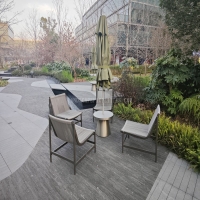Welcome to the website for landscape facilities products and knowledge.
How does the table’s design account for ease of use in outdoor lecture halls?
Outdoor lecture halls present unique challenges for furniture design, particularly when it comes to table functionality. Modern outdoor tables address usability through several intentional design elements that accommodate both instructors and students in open-air environments.
The foundation of outdoor table usability begins with durable construction. Manufacturers utilize weather-resistant materials like powder-coated aluminum, marine-grade polymer, or treated wood that withstand constant exposure to sun, rain, and temperature fluctuations. These surfaces maintain their integrity without warping, cracking, or fading, ensuring consistent performance semester after semester.
Ergonomics plays a crucial role in outdoor table design. Tables feature slightly inclined surfaces in lecture positions to accommodate natural writing angles while preventing materials from sliding. The height calculations account for proper posture when seated for extended periods, with standard measurements between 28-30 inches for comfortable use with outdoor seating. Many designs incorporate subtle lips or edges to prevent pens and papers from sliding off during breezy conditions.
Accessibility considerations significantly influence table configurations. ADA-compliant designs include extended knee spaces, appropriate height clearances, and maneuverability zones for wheelchair users. These accommodations are seamlessly integrated rather than appearing as afterthoughts, maintaining aesthetic continuity while ensuring inclusive usability.
Modularity represents another key usability factor. Many outdoor lecture tables employ interlocking systems or flexible arrangements that allow institutions to reconfigure spaces for different class sizes or teaching styles. This adaptability enables everything from traditional lecture setups to collaborative group work formations without requiring permanent installations.
Surface treatments enhance practical functionality in outdoor settings. Matte finishes reduce glare from sunlight, while integrated power outlets and connectivity ports accommodate digital learning tools. Some advanced designs even incorporate wireless charging pads, addressing the technological needs of modern education in exterior environments.
Drainage systems represent a particularly innovative aspect of outdoor table usability. Strategically placed channels or perforated surfaces allow rainwater to quickly escape, enabling rapid drying after precipitation. This practical feature minimizes maintenance requirements and ensures tables can be used shortly after weather events.
The integration of tables with surrounding infrastructure further supports usability. Designers consider sightlines from various seating positions, ensuring clear views of presentation areas. Tables often coordinate with fixed seating or complementary movable chairs, creating cohesive learning stations that function harmoniously within the broader architectural context.
Through these thoughtful design elements, outdoor lecture hall tables transcend mere weather resistance to become actively supportive of pedagogical activities. The combination of durable materials, ergonomic considerations, accessibility features, and technological integrations creates functional surfaces that enhance rather than hinder the outdoor educational experience, proving that well-designed furniture can successfully bridge the gap between interior comfort and exterior inspiration.
Related search:

Recommendation
Metal structure rattan chair without armrests for single person, with woven seat and backrest.